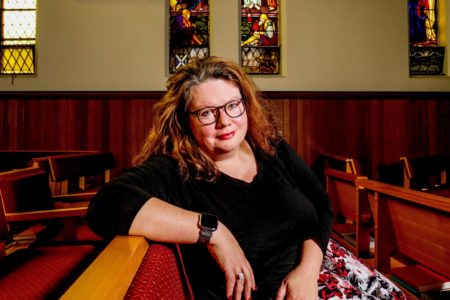By Rev Jay Robinson, Minister and Chaplain
In the first year of my first placement, I was in conversation with a member of staff at Monash University where I was the chaplain.
We were talking about Easter and just what we were each doing at this time.
The university was closed over the Easter period, which was unusual as the university rarely closed and only on Australian-declared public holidays.
She was not someone who went to church and so was surprised when I told her of Holy Week’s services and events that were taking place leading up to Easter Sunday.
“I suppose this is your equivalent to Grand Final Week,” this avid football supporter said, and I replied “yes, it is”.
That description of the week leading up to Easter has stuck with me, and I always refer to my Grand Final Week.
The journey towards Easter Sunday is filled with remembrances, with stories, with shame at what people can do to others, as well as filled with wonder that we have a God who loves us so much that Christ was sent to us.
For me, the journey through that last week of Christ’s ministry before the resurrection is one of symbol and mystery.
As I have the privilege to take this journey with a congregation, I believe it is up to me to help them experience the journey as creatively and deeply as I can.
The use of images, sounds, reflections, actions and objects all help with trying to make that journey as meaningful and real as I can.
As I hear the responses from those around me about the importance of Easter to them, I learn more, reflect more and am challenged by the journey.
This is the coming of God’s son to be with us, to show us just what love really looks like.
This is what giving up your life for the sake of others looks like.
This is what forgiveness and grace looks like.
This is a life-changing event that means things are no longer the same from here on in.
I often wonder what it would have been like to be there at the time, to experience it as it happened, but I probably would have missed it or ran away to stay out of the emerging situations.
So, it is important for me to dive deeply into the events, be with the disciples, hear their fear and misunderstanding – it helps me as I speak with others who are exploring their faith and asking important questions.
I also believe it is important to stop and sit in the darkness and silence of Easter Saturday.
We can move on too quickly from the horror of Good Friday to the celebration and miracles of Easter Sunday.
The Saturday allows space to reflect on what humankind can do to each other, the Saturday allows space for the hope and light to begin to seep in, the Saturday creates the expectation for all that Easter can mean.
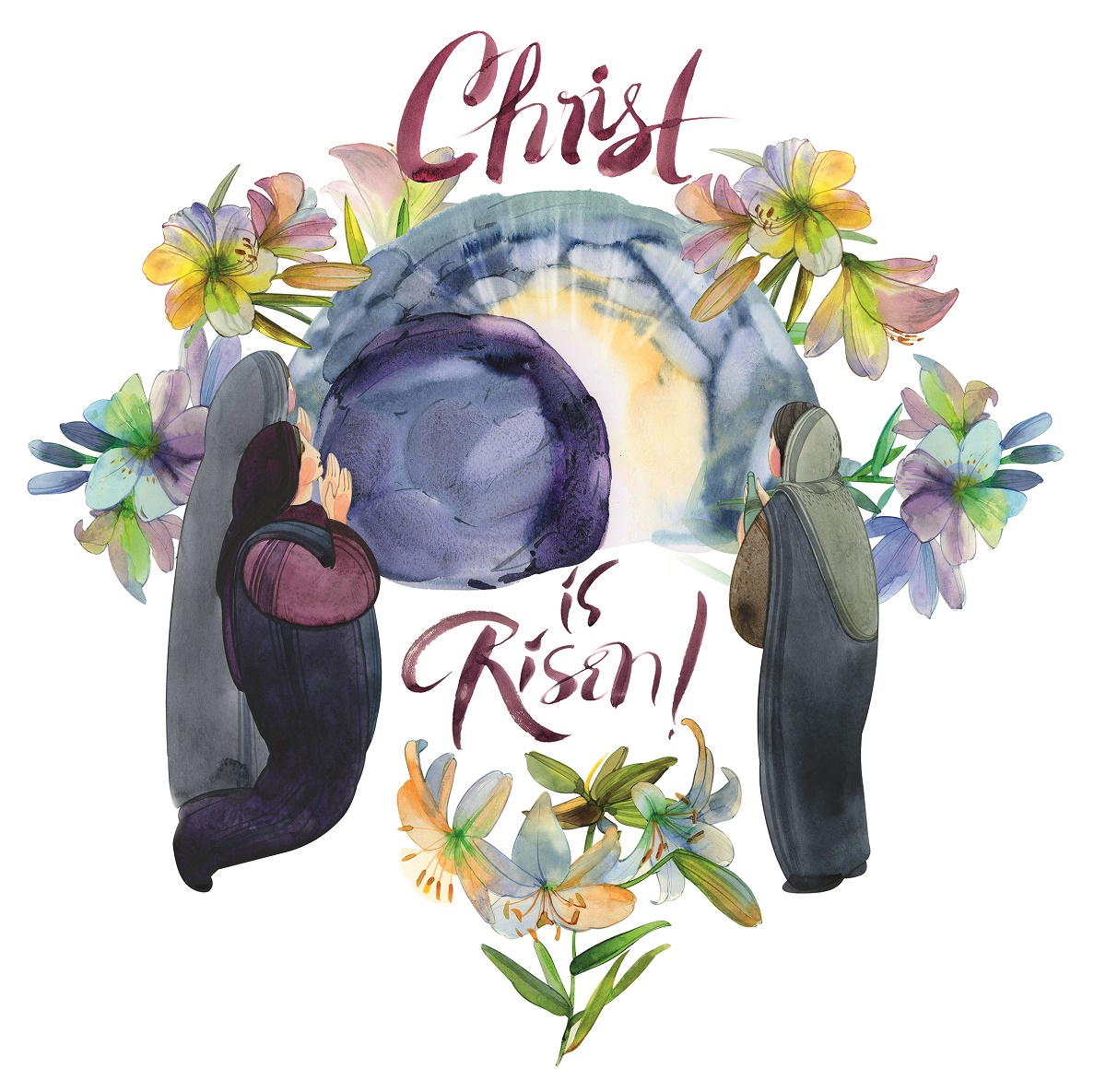
“Easter is the lens through which we see through the cross to resurrection life,” writes Rev Ikani Vaitohi.
Rev Ikani Vaitohi, Pilgrim Uniting Church
On Good Friday each year, members of Pilgrim Uniting Church in Yarraville walk the Stations of the Cross with friends from St Augustine’s Catholic Parish and Westgate Baptist Church.
As pilgrims, we walk from one church to the next, through the streets of Yarraville – a sprawling line of young and old, following a large wooden cross.
Last year, I joined this longstanding ecumenical walk for the first time. I found it to be a sombre and powerful re-enactment of Jesus’ final journey to the cross. It was a profound reminder of why celebrating Easter continues to be the Church’s gift to herself and the world.
As our procession wove its way around the streets of Yarraville, I wondered: how do we go about making the cross this visible on every day of the year, not just Good Friday?
How do we, as a local church community, make visible to our neighbours that the God of hope is already at work in their lives in the world?
How do we communicate to others that the cross is at the core of our being, ingrained into our body?
That the cross is everything that we think and speak, that we hear and do – our collective call for action, grounded in a belief that love will always trump hatred, injustice and fear.
Easter is the lens through which we see through the cross to resurrection life.
Easter is the lens through which we see from doubt to faith and through fear to renewed hope, not just once, but again and again.
My hope is that our Yarraville community will not just see a wooden cross being carried down their local streets on Friday, March 29, give us a wave and then continue on, their lives unchanged.
My hope is that they will discover the powerful reassurance of the cross for all of us caught up in the scary maze of modern life.
That they will come to know that through Christ’s resurrection, death did not succeed; death did not have the last say.
We know this to be true for ‘Christ is Risen, he is risen indeed! Hallelujah!’
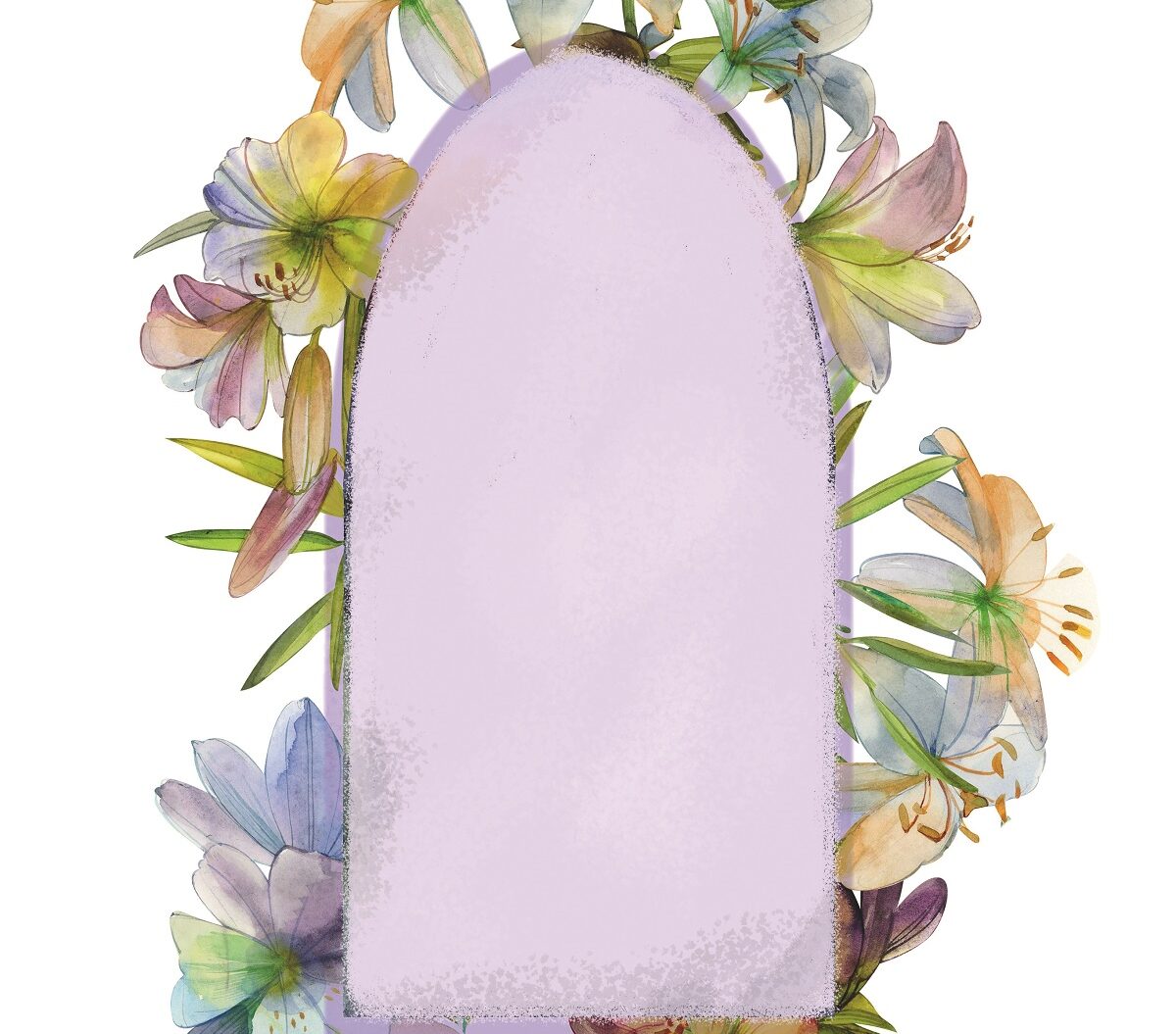
E”All of the dead are resurrected on the day of Christ’s death and born into eternal life together with him,” writes Rev Dr Ji Zhang.
Rev Dr Ji Zhang, Port Philip East Presbytery
“On that day, the Messiah was nailed onto the Tree [of Life] for five periods of two hours. This was also the (Buddhist) Day of Sacrifice and Fasting. He was stranded on the Tree until the sunset. The heavens were darkened in four directions, and the earth was shaken. The mountain cracked. All the tombs in this world were opened; all the dead (the Prophets, the Saints, and the faithful in Christ) had been resurrected together with Him.”
This text belongs to the ancient scroll ‘Listen to the Messiah’. The 8th century scroll contains the first narrative of Jesus written in the Chinese language by a second-generation Syriac-speaking priest who lived in China. This passage has a remarkable assertion: the death of Jesus and the general resurrection of the faithful are not two events, rather they have happened together. Why?
To answer this question, I spent six months to translate and interpret the text. And I discovered the passage had a close association with the apocalyptic writing in Matthew 27: 51-53. But to understand the context, I reconstructed a trinitarian theology rooted in the Council of Nicaea (325) and recreated the dialogue between the Orthodox tradition and the Buddhism and Daoism in the Tang Dynasty. The study has become a mirror to my Protestant belief, and a window to see the significance of the mission to China by the Church of the East in 635.
For human beings, the death-resurrection of Christ and the general resurrection of the faithful are two ends of history; the former marks the beginning of Christianity, the latter unveils God’s final consummation of all things. For God, however, they are two phases of the same act. “God raised the Lord and will also raise us by his power”. (1 Cor 6:14)
The resurrection power derives from God’s creativity – the creation out of nothing. Here, history does not matter. Even the cross upon which Christ was crucified, and the Tree of Life stood in the Book of Genesis, they communicated with each other through Paul’s insight of God’s salvation. “The first man, Adam, became a living being; the last Adam became a life-giving spirit”. (1 Cor 15: 45)
To further explain the significance in the cultural context, I revisited a trip that I did in 2014. I came to the Longmen Grottoes to see a new discovery of the Christian tombs. Over a period of 500 years, the whole mountain was the burial site of Buddhism until the rising of the Zen Sect which shifted the belief of salvation from the bodily reincarnation to the spiritual enlightenment. But at the back of the mountain, I discovered a group of tombs marked by a cross from the Church of the East. I measured all 15 tombs and discovered a commonality: small entrance and large chamber.
For Buddhism, burial is the reverse process of birth. Placing the body in the tomb goes through the narrow birth channel and returns to the womb of the earth. And then two doors will conceal the chamber – the body is in gestation again for the reincarnation.
I reimagined myself standing in front of the mountain, seeing the Buddhist tombs numbered in their thousands and I realised something. “All the Dead Have been Resurrected with Him”. This is a witness. No, there is no waiting for the dead to be awakened through the rebirth. In Christ, all the dead have already been resurrected with him.
Christianity is a tiny minority, just like me standing before the huge statues. However, in front of the overwhelming Buddhist culture, the Christians have witnessed the Good News. All of the dead are resurrected on the day of Christ’s death and born into eternal life together with him. This is the economy of God’s salvation.
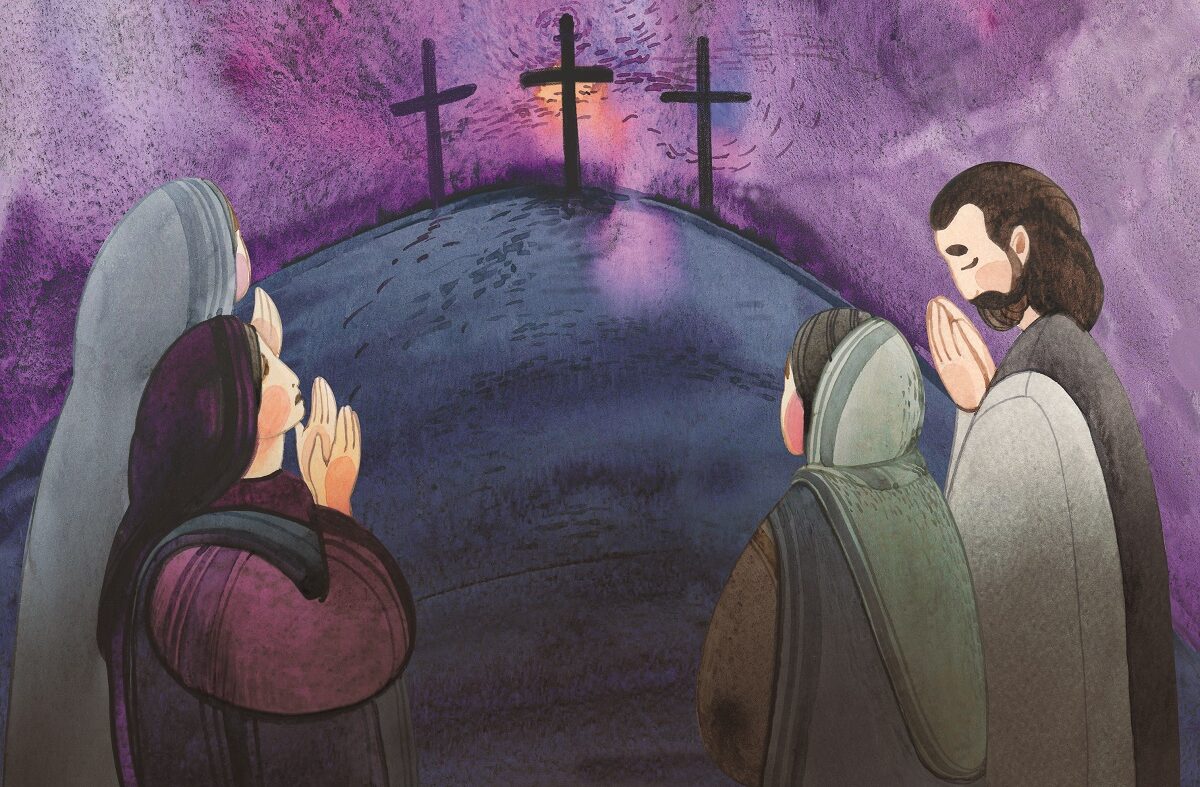
“At Easter I remember, reflect upon, celebrate, and retell the drama of the central story of my faith,” writes Rev Narelle Collas.
By Rev Narelle Collas, Presbytery Minister (Port Phillip West)
On a visit with my nieces and nephews I had the privilege of doing the bedtime story with them.
All four of them would pile onto one of the beds around me.
So I would read their favourite story and even when we got to the end, they would chime “again, again”.
As humans we are wired for story, and we all like to get pulled into a great story.
We tell stories all the time and hidden within the stories, like diamonds in the rough, are deep truths.
I heard a story about Joe, who in the week before Easter, was sitting beside his mother’s bedside as she was dying.
She drew him close and with a raspy voice asked him to promise her something.
“Anything mum,” he answers.
“I want you to go to church this Easter … will you do that for me?” his mum asks.
“Yes mum, I’ll go to church this Easter,” answered Joe.
Joe’s mother died just a few hours later and, after her death, he kept his promise and went to church on Good Friday and Easter Sunday.
The next year when Easter came around Joe remembered his mum and his promise so he went to church again.
This continued for many years and every Easter he would turn up at the local church, sit through the service, shake the hand of the minister on the way out and leave.
Joe never went to church any other time of the year but when Easter came around, he would be there.
One year, as Joe was heading out the door and shaking hands with the Minister, he said, “I really enjoy coming to your Easter service each year, but I am wondering, do you think that next year you could tell a different story: every year I come it’s that same one.”
Each year, as the milestone dates and stories of our Christian year pass, we are challenged to engage with the story again and again.
To find the deep truths within them.
As a person of faith and a member of the people of God, at Easter I remember, reflect upon, celebrate, and retell the drama of the central story of my faith.
This story defines who I am as a Christian, it tells me about whom I follow and have committed my life to serve and why.
The Easter story, a story of life after death, a story where God’s love for the world conquers death, a story which invites us again and again, year after year, to consider the truth that there are dead places in our lives, and within our world, yet these places can be renewed to new life through God’s love.
Every Easter, Jesus is resurrected and once again we are asked to ponder what it means to be alive, to live in hope and faith, and to trust that God’s justice will indeed prevail.
There may not be another story that begs our telling over and over again more than the Easter story, for it is in this story where we find our hope, our joy, our peace, and the fullness of life.
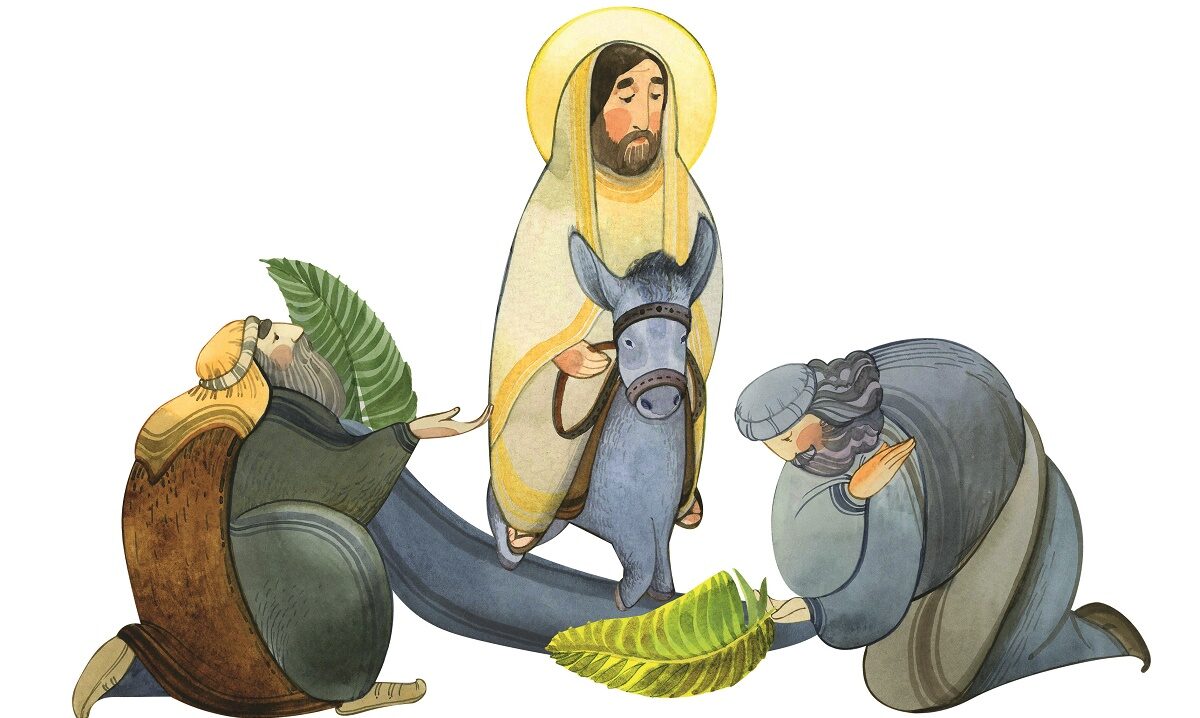
“(Easter) is … the promise that risen life will come into the most heartbreaking places and transform the world,” writes Rev Assoc Prof Kylie Crabbe.
By Rev Assoc Prof Kylie Crabbe, Uniting Church Minister and Associate Professor of Biblical and Early Christian Studies, Australian Catholic University
Not unsurprisingly, the Easter story takes up a sizeable chunk of each Gospel narrative. Indeed, Mark’s Gospel is often described (perhaps a bit melodramatically) as a passion narrative with an extended introduction.
That’s how central the story of Jesus’ betrayal, his unjust trial, death, and his empty tomb is for Mark’s story of “the good news of Jesus Christ”.
In Holy Week, we tell this story in stages. Palm Sunday is full of enthusiasm, but very much not the end of the story. From Holy Thursday to Easter Day we celebrate one long extended service. Over these great three days we get right into it: darkness on Thursday, as betrayal turns out all our candles. Death on Friday that goes to the very depths, like there’s no tomorrow, maybe. Perhaps a day on the apparent silence of Holy Saturday, before unalloyed joy on Easter Day.
We slow the story down so we can be attentive to each bit of it. But now we have a whole season of six more weeks holding it together. Because embracing only part of this story, any single part of it, is not big enough for real life. It’s all true at once.
I remember a conversation with a colleague working with people with serious mental illness. What do you say about Christian hope, she asked, to people for whom it will not “just get better”? Her answer was that you focus on the good news that the God of the cross is with us in it all. Radically.
This radical solidarity of the crucified God can plumb the depths with us. Perhaps it’s gotten you through your own dark night. It certainly has me. And it can help us to build communities of solidarity in the face of incredibly difficult things. It’s powerful. Like Dorothy Day giving a home to homeless people who showed up at her place after she published her ideas about Christian solidarity. She realised she would have to put these ideas into practice.
The claim that the God of the cross is with us is particularly powerful, though, because it is not simply solidarity in death, grief, and suffering. It is the presence of the Crucified and Risen One. We hold the whole of Easter together. The whole of Easter holds us together, even (or especially) when it feels like we might fall apart.
This is also a reason to be careful about rushing too quickly into blithe claims about resurrection. When my husband died in a car accident, I couldn’t bear to sing “death has lost its sting”. “Truly?” I railed against Thine Be the Glory’s lyrics. In so many ways, in so many situations, I felt death was still very much full of sting. We see it in death in Gaza, Israel, Ukraine, Somalia, and North Korea. Death in our over 30-year failure to implement recommendations of the Royal Commission into Aboriginal Deaths in Custody. In losing ground on most of the Closing the Gap measures. And in the tears in the eyes of so many of us, like me, struggling to sing triumphant hymn words, over deaths very close to home.
Easter isn’t a way of sentimentalising very present realities. It isn’t that small. It is looking very directly into the absolute heartache of all that is not yet right in our world. And it is being startled by the promise that risen life will come into the most heartbreaking places and transform the world. There will be a day with no more tears.
And while we nurture that hope, leaning into it with our action, seeking the Spirit’s guidance and company as we likewise work for change, we nurture also this confidence. That there is nowhere too broken, too betrayed, too full of regrets at our own bad behaviour, and nowhere so infused with the stench of death, that God in Christ has not been there and will not meet us even now.


